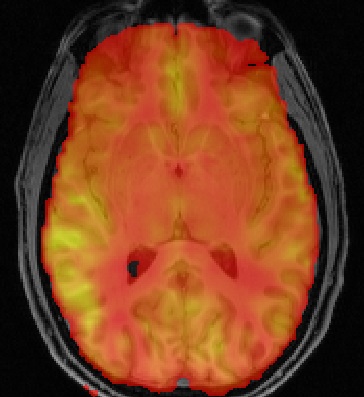Bayesian Inference for Arterial Spin Labelling MRI¶

Arterial Spin Labeling (ASL) MRI is a non-invasive method for the quantification of perfusion. Analysis of ASL data typically requires the inversion of a kinetic model of labeled blood-water inflow along with a separate calculation of the equilibrium magnetization of arterial blood.
The OXASL toolbox uses the FSL FABBER ASL package which performs the kinetic modelling using Bayesian inference principles. The package was orginally developed for multi delay (inversion time) data where it can be used to greatest effect, but is also sufficiently flexible to deal with the widely used single delay form of acquisition.
Note
If you want to perform analysis of a functional experiment with ASL data, i.e. one where you want to use a GLM, then you should consult the perfusion section of FEAT, or if you have dual-echo (combined BOLD and ASL) data then consult FABBER.
For single delay ASL data kinetic model inversion is relatively trivial and solutions to the standard model have been described in the literature. However, there are various advantages to aquiring ASL data at multiple times post-inversion and fitting the resultant data to a kinetic model. This permits problems in perfusion estimation associated with variable bolus arrival time to be avoided, since this becomes a parameter of the model whose value is determined from the data. Commonly the model fitting will be performed with a least squares technique providing parameter estimates, e.g. perfusion and bolus arrival time. In contrast to this BASIL uses a (fast) Bayesian inference method for the model inversion, this provides a number of advantages:
- Voxel-wise estimation of perfusion and bolus arrival time along with parameter variance (allowing confidence intervals to be calculated).
- Incorporation of natural varaibility of other model parameters, e.g. values of T1, T1b and labeling/bolus duration.
- Spatial regularization of the estimated perfusion image.
- Correction for partial volume effects (where the appropriate segmentation information is available).
While the first two apply specfically to the case of mulitple delay data, the latter are also applicable to single delay ASL and are only available using the Bayesian technique employed by OXASL.